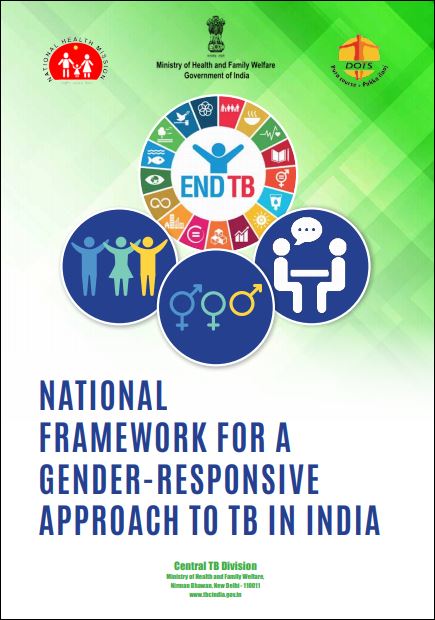National Framework for a Gender-Responsive Approach to TB in India

Abstract: Tuberculosis (TB) affects an estimated 10 million people globally every year, of which around 3.2 million are women. India has the world’s highest annual incidence of TB as well as the highest TB-related mortality. Although more men are affected by TB, women and transgender persons experience the disease differently. Gender differences and inequalities play a significant role in how people of all genders access and receive healthcare in the public and private sectors. There is adequate evidence to indicate that gender is a significant influencer of the epidemiology, risk factors, probability of diagnosis, access to healthcare, treatment adherence and overall impact of TB on communities. A gendered approach to TB care and prevention is a felt need in the Revised National Tuberculosis Control Programme (RNTCP) and this framework is a first step in that direction.
This framework reflects the interactions between TB and gender at various levels, and outlines the influences and impact of gender on the TB burden and response; defines actions which would help move towards a gender-responsive approach; and provides guidance to implement these actions. The framework is in keeping with the National Strategic Plan for TB for 2017-2025 and is intended to spark dialogue at all levels within the TB programme and among key stakeholders, thereby strengthening the collective understanding of TB and gender
This framework reflects the interactions between TB and gender at various levels, and outlines the influences and impact of gender on the TB burden and response; defines actions which would help move towards a gender-responsive approach; and provides guidance to implement these actions. The framework is in keeping with the National Strategic Plan for TB for 2017-2025 and is intended to spark dialogue at all levels within the TB programme and among key stakeholders, thereby strengthening the collective understanding of TB and gender
Author(s): Central TB Division of India
Year: 2019
Language: English
Region(s): INDIA
Resource Type: Guidance and Tools
Source: Other
